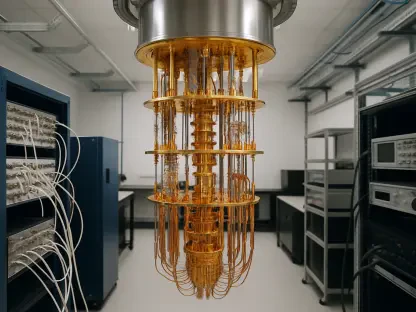Researchers at the University of Waterloo’s Cheriton School of Computer Science in Canada have discovered a remarkable potential for energy savings in data centers via a minor modification to the Linux kernel. The finding, which was presented at ACM Sigmetrics 2024, highlights that adjusting just 30 lines of code within the Linux kernel can significantly reduce data center energy consumption by 30% to 45%. This impressive result holds promise for both energy efficiency and operational cost reduction, especially for research institutions that rely heavily on Linux-powered servers.
Linux is a dominant operating system in data centers, where energy consumption is increasingly becoming a critical issue. The research focuses on enhancing the Linux kernel to facilitate more sustainable operations—an effort that could lower energy use while maintaining high performance. This is particularly relevant as data centers continue to expand and become more integral to global digital infrastructure.
The Breakthrough Discovery
Optimizing the Linux Networking Stack
The kernel modification primarily involves rearranging operations within the Linux networking stack. This adjustment optimizes the CPU caches’ usage, akin to refining a manufacturing plant’s workflow to minimize unnecessary movement and enhance efficiency. Professor Martin Karsten, who is also the associate director of Waterloo’s Mathematics 4 building’s sustainability initiatives, explains that this method does not add new processes but reorganizes existing ones to enhance efficiency. This rearrangement can improve throughput by up to 45% while keeping latency low, particularly during high network traffic periods.
Moreover, the proposed adjustment addresses the critical challenge of optimizing power usage without sacrificing performance, a balance often difficult to achieve in data center operations. By leveraging intelligent CPU cache management, the modification minimizes the energy expended in handling network traffic, thus yielding substantial energy savings. This strategy is comparable to adjusting the logistics of a production line to reduce unnecessary steps, thus conserving resources and enhancing output efficiency. As data centers become even more crucial to the world’s digital infrastructure, this optimization offers a timely and impactful solution to a growing problem.
Collaboration and Development
Karsten collaborated with Joe Damato, a distinguished engineer at Fastly, to develop this non-intrusive kernel adjustment aimed at improving Linux’s network traffic processing. If widely adopted, this method could substantially reduce the power consumption of essential data center operations. The key component in their approach leverages Interrupt Request (IRQ) suspension, which optimizes CPU power use and improves network performance. This technique suspends unnecessary CPU interruptions during high-traffic conditions, thus enhancing network performance without compromising on latency during low-traffic conditions.
The collaboration between an academic institution and industry professionals highlights the innovative potential and practical application of the adjustment. Damato’s expertise provided valuable industry insights, ensuring the modification is both practical and sustainable for real-world data center operations. Furthermore, their joint effort underscores the importance of cross-disciplinary collaboration in advancing technological innovation. By uniting academic research with industry practice, they have developed a powerful and practical solution poised to benefit a wide range of data centers globally.
Implications for Data Centers
Energy Efficiency and Cost Reduction
The impetus for this research comes from the University of Waterloo’s ongoing project to build a green computer server room in their new mathematics building. According to Karsten, sustainability should be at the forefront of computer science research, especially considering the large-scale adoption of Linux by major corporations like Amazon, Google, and Meta. The potential for these extensive data centers to “switch on” this energy-saving method means gigawatt-hours of energy savings worldwide. Nearly every service request on the internet could benefit from these improvements, resulting in a cascading effect of energy conservation.
As data centers continue to expand rapidly, their energy demands grow accordingly, making sustainable solutions increasingly vital. The projected energy savings from this kernel modification could significantly reduce both environmental impact and operational costs across the tech industry. For companies with vast server operations, these adjustments could translate into millions of dollars in energy cost savings annually. By implementing such changes, tech giants can take a substantial step towards meeting their sustainability goals and reducing their carbon footprints.
Reception from the Open-Source Community
The broader open-source community has also shown a positive reception to this development. Ann Schlemmer, CEO of the open-source database firm Percona, praises the approach for its thorough testing and documentation. She sees it as a compelling example of the power of open-source and communal contributions. Similarly, Jason Soroko from Sectigo acknowledges the credibility and potential long-term impact of the research. If successful, this modification could become an integral part of Linux and possibly influence other platforms, bringing about significant efficiencies that address privacy, security, and performance concerns.
This enthusiastic endorsement from influential figures in the open-source community underscores the broader potential of the modification. By sharing this innovation openly, the research team ensures that it can be adopted and refined by other developers and organizations. The collaborative spirit of the open-source community plays a crucial role in driving forward such advancements, creating a collective momentum towards more sustainable and efficient technological solutions. This sense of communal effort bolsters the idea that even minor changes, when widely adopted, can lead to significant industry-wide transformations.
Practical Considerations
Implementation and Scalability
Regarding the practical implications, Jamie Boote from Black Duck Software underscores that implementing minor efficiencies can yield significant energy savings at scale in data centers. Modern networking interfaces consume more power than their predecessors, and this adjustment in the networking stack addresses the growing power demands. By changing how tasks are scheduled during high bandwidth events, computers can better manage network traffic and prioritize energy expenditure more effectively, aligning with modern hardware requirements.
Boote’s insights emphasize the need for practical, scalable solutions that can be seamlessly integrated into existing data center operations. As technology evolves, the demand for more efficient networking interfaces intensifies, making such optimizations essential. The ability to manage network traffic more effectively not only conserves energy but also enhances overall system performance. This dual benefit aligns perfectly with the industry’s drive toward more efficient, high-performance computing environments, ensuring that this kernel modification can provide tangible benefits on a broad scale.
Potential Trade-offs
The kernel modification involves reorganizing operations within the Linux networking stack to optimize CPU cache usage, similar to refining a factory’s workflow to reduce inefficiencies. Professor Martin Karsten, who oversees sustainability initiatives at Waterloo’s Mathematics 4 building, explains that this method doesn’t introduce new processes but rearranges current ones to boost efficiency. This reorganization can enhance throughput by up to 45% while maintaining low latency, especially during high periods of network traffic.
Additionally, the adjustment tackles the crucial challenge of optimizing power usage without compromising performance, a tricky balance in data center management. By using intelligent CPU cache management, the modification lowers the energy needed to manage network traffic, achieving significant energy savings. This is like improving a production line’s logistics to eliminate unnecessary steps, saving resources and boosting output. As data centers become more vital to global digital infrastructure, this optimization provides a timely and effective solution to an ever-growing issue.









